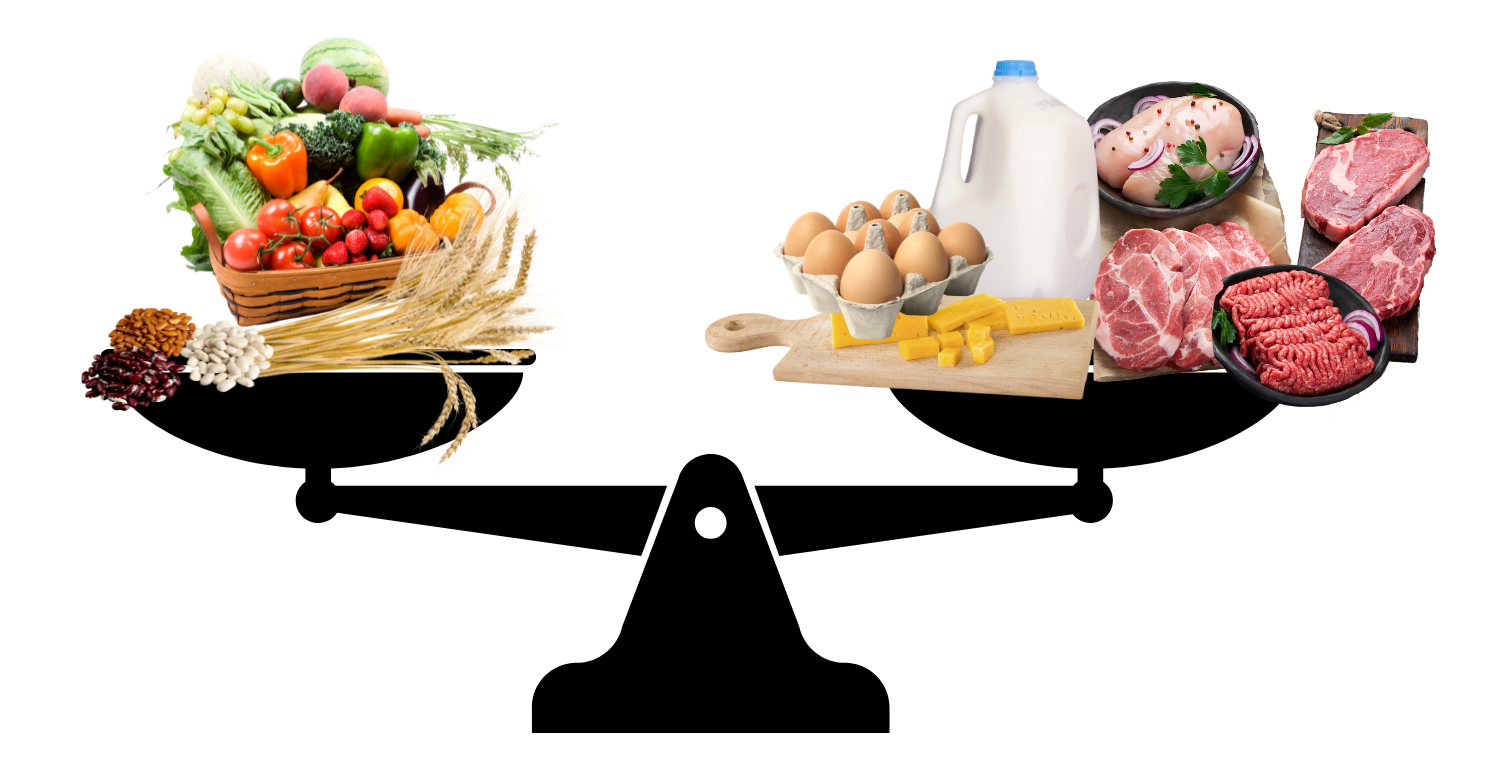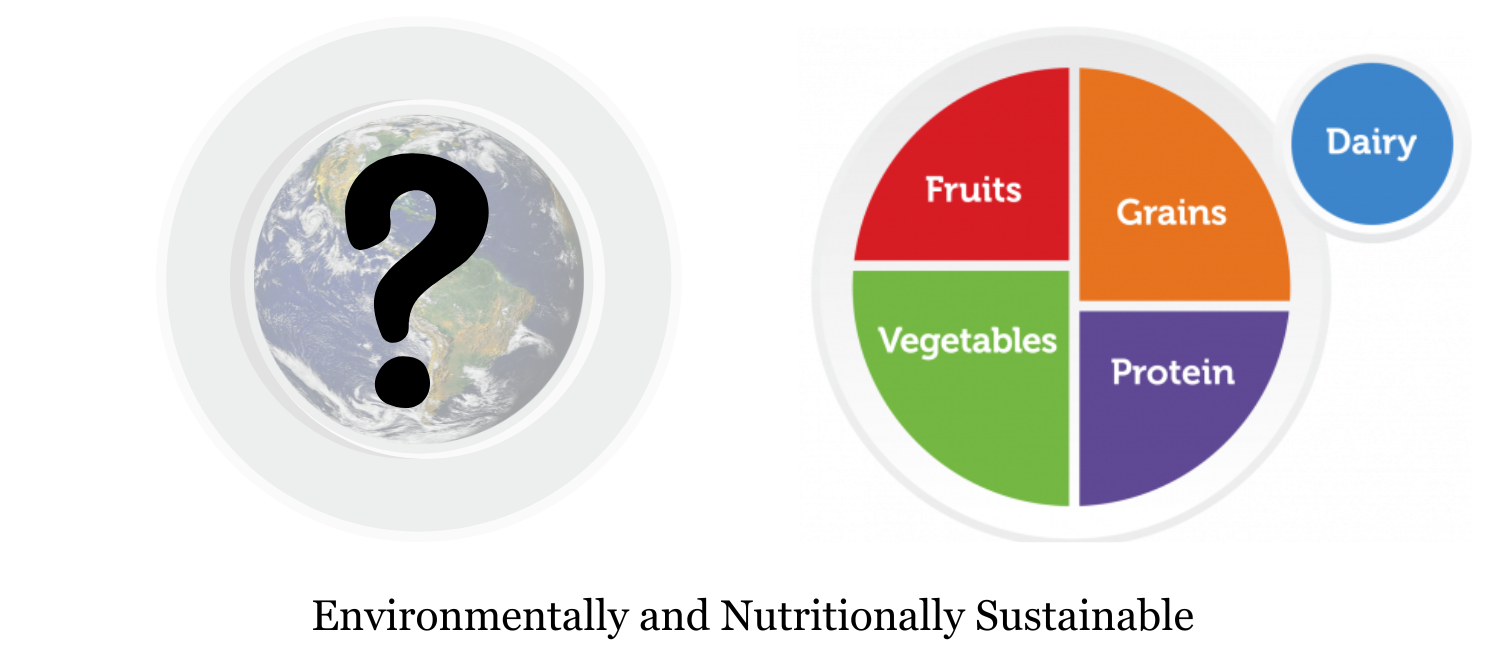The environmental footprint of food encompasses the range of ecological impacts associated with producing, processing, transporting, and consuming what we eat. Eating is necessary to sustain life, but it does contribute to human impact on our world. This footprint includes factors such as greenhouse gas emissions, water usage, land degradation, and biodiversity loss. For instance, livestock farming is a contributor to methane emissions and deforestation, while intensive crop production can lead to soil erosion and excessive water consumption. Understanding and mitigating these impacts is crucial for fostering a more sustainable food system and reducing our overall environmental footprint.
Environmental Cost of Food
The ecological food footprint, often referred to as the environmental footprint of food, or a "foodprint" takes into account various factors that measure the environmental impact of producing, processing, transporting, and consuming food. Some of the key factors considered in the ecological food footprint include:
-
Land Use: The amount of land required for agricultural production, including crop cultivation, grazing, and feed crop production. This accounts for both direct land use and land used for feed production. It can also include the impact of agricultural practices on soil health, erosion, and degradation.
-
Water Use: The amount of water required for irrigation, animal drinking, and processing throughout the food supply chain. This includes both direct water use and the water embedded in food production. The pollution of water bodies from nutrient runoff, pesticide residues, and other contaminants associated with agricultural activities should also be evaluated.
-
Greenhouse Gas Emissions: The emissions of greenhouse gases such as carbon dioxide, methane, and nitrous oxide are associated with food production, transportation, and processing. These gases contribute to global warming and climate change.
-
Energy Consumption: The energy required for various stages of food production, including planting, cultivation, harvesting, processing, transportation, and storage.
-
Waste Generation: The generation of waste materials along the food supply chain, including packaging waste and food waste.
-
Inputs: The ecological footprint of resources used to produce inputs like fertilizers, pesticides, and machinery for food production. Includes the use of pesticides, herbicides, fertilizers, and other chemicals in food production that can affect soil and water quality and impact ecosystems.
-
Transportation: The energy and emissions associated with transporting food from production sites to processing facilities, markets, and consumers.
These factors collectively contribute to understanding the overall environmental impact of food production and consumption. Life cycle assessment (LCA) is a common method used to quantify the ecological food footprint by considering all stages of the food supply chain. Life cycle assessments could be made for all consumer items. Efforts to reduce the ecological food footprint involve adopting sustainable farming practices, improving resource efficiency, reducing waste, and promoting responsible consumption patterns.
Animal-source Foods
The livestock industry encompasses various aspects of animal agriculture that involve the raising, breeding, and utilization of animals for various purposes. This industry provides a wide range of products and services that are essential for human consumption, economic growth, and other applications. Livestock animals provide the following:
- Meat: The primary purpose of livestock in many societies is to produce meat for human consumption. This includes beef, pork, poultry (chicken and turkey), lamb, and other types of meat. Meat serves as a significant source of protein, vitamins, and nutrients in human diets.
- Dairy: Livestock, particularly cattle, are raised for dairy production, providing milk, cheese, yogurt, butter, and other dairy products. Dairy products are rich in calcium, protein, and other nutrients and are widely consumed around the world.
- Eggs: Poultry, such as chickens, are raised for egg production, supplying a vital source of protein and nutrients to diets globally.
While meat, dairy products, and eggs are the primary products produced by livestock, there are also many secondary products, or byproducts as well. The livestock industry provides leather, fertilizer, pet food, fiber, and ingredients used in wax paper, crayons, margarine, paints, rubber, candles, soaps, cosmetics, shaving creams, gelatin, and more. Livestock also provide employment and economic opportunities and play important roles in some cultural and traditional practices, rituals, and ceremonies throughout the world.
Plant-source Foods
Plants are essential to our diet as they provide a wide array of vital nutrients, including vitamins, minerals, fiber, and antioxidants, which are crucial for overall health and well-being. They help reduce the risk of chronic diseases such as heart disease, diabetes, and cancer, while also promoting digestive health and supporting a healthy weight. Additionally, plant-based foods contribute to a more sustainable food system, offering a lower environmental footprint compared to animal-source products. Incorporating a diverse range of plants into our diet not only supports personal health but also benefits the planet.
- Fruits and Vegetables: The most popular fruits in the United States are apples, bananas, oranges, grapes, and strawberries. The most common vegetables are potatoes, tomatoes, carrots, lettuce, and onions.
- Grains: Grains such as wheat, rice, corn, oats, and barley are the foundation of many meals and snacks and provide essential carbohydrates, fiber, and nutrients.
- Legumes: A variety of beans, lentils, peas, and soybeans are part of a balanced diet and a rich source of protein, fiber, vitamins, and minerals.


